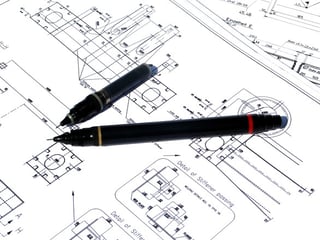This is the third post in our year-long series about the best ways to work with your Owner's Representative. You can view all of the series posts here.
The Project Management Plan is the heart and soul of how the Owner’s Project Team will run the project.

This plan outlines key visions of the leader of the Owner’s Representative Team on how the project should be run. Not having a plan will cause starts and stops in a project as the collective team (Owner, Design Team and Contractor) wait until the Owner’s Representative puts in place the segments of this plan on the fly. Development of this plan will help put in writing the vision of the project, budget, schedule and processes necessary to achieve that vision.
The key elements of a Project Management Plan include at a minimum:
1. Project Requirements/Project Scope
The Project Management Plan starts with the definition of the project scope as previously explained. What is the “purpose” of the project? What is the end goal when the project is complete? It is critical that this goal be clear to all team members to have a successful project.
 2. Communications Protocol
2. Communications Protocol
This is a critical segment that needs to be clear to all team members. The standard protocol is for the leader of the Owner’s Representative to author all key correspondence between Owner and any of the key contracts that are held by the Owner (i.e. Design Team, Contractor, etc.). One of the key areas that the communications protocol needs to address is how communications are maintained for project history (which will be discussed later in information management). However, it is vital that the Owner’s Representatives maintain a professional style to all communications on a project. Clearly written emails and letters are important for project history. Communications in general should stick to the facts in a matter and if the purpose of the communication is to ask a question, those questions should be clear.
 3. Master Schedule
3. Master Schedule
A Master Schedule should be developed that will detail the segments of the project – site investigations, permitting, design, procurement, construction and commissioning/turnover. This will allow all members to understand the key dates the project needs to achieve.
4. Risk Management Plan
The management of risks is critical for all projects. The Project Management Plan should list the key risks that a potential project will encounter and processes to address these risks. The purpose of putting the key risks in the Project Management Plan is to ensure that the Owner’s Team Members are alert to those risks and collaboratively work to minimize those risks. A plan should be formulated in writing for assigning risks to the party best able to manage/mitigate those risks.
5. Quality Management Approach
Quality on a project many times gets left last as Owners focus first, on cost and then schedule. At the end of the day the quality of a built project is extremely critical for a lot longer than the time it took to design and build a project. In the Project Management Plan, the Owner’s representative should outline who will be responsible for delivering quality on a project. This starts first with a good design. It is recommended that a differentiation document be developed first to clearly outline who will be responsible for quality on segments of a project.
 6. Safety Management Approach
6. Safety Management Approach
While the Owner is not responsible for safety on a project they should enforce a culture of safety on the project. This starts in the pre-design phase. Responsibility for safety should be delegated to the party who can best manage it. There should be an oversight process put in place to enforce a culture of safety.
7. Project Organization Chart and Staffing Plan
This segment of the Project Management Plan should outline the anticipated project organization and staffing plan so all team members understand the plan.
8. Explanation of Roles, Responsibilities, and Authority of Team Members
This segment of the Project Management Plan outlines the roles, responsibilities and authorities of each of the team members. It is recommended that a list of responsibilities be detailed and those responsibilities assigned to the appropriate roles on the team and that the authority is detailed to allow that role to meet their responsibility.
 9. Project Budget/Work Breakdown Structure
9. Project Budget/Work Breakdown Structure
In this segment of the Project Management Plan, the budget with breakdown should be included. All parties should understand the budget and the parameters of the budget.
10. Sustainability Plan
This segment is critical if the project is to be LEED Certified and it is important to note in the Project Management Plan if a LEED Certification is the goal of the project. In this segment of the plan, detail should be included as to what level of LEED Certification the project is seeking to achieve and how that level of LEED Certification will be tracked throughout the project (who will be responsible for coordinating with the USGBC and any other sustainable/green programs or regulations that must be met, as well as any specific Owner requirements for sustainability).
11. Bid Packaging, Contracting Strategy, and Delivery System Evaluation
One of the first steps the Owner’s team needs to undertake in a project is to assist the Client in determining what delivery system or systems is best for the project. The key delivery methods considered in most of our projects include:
a. Design-Bid-Build
This is the most traditional method used on most projects. In this delivery system the Client hires an Architect/Engineer (Design Team) to develop a detailed design and puts the design out for a lump sum or fixed price bid from a General Contractor. This is applicable to all projects and best used when the project has adequate time to adjust the design if the bids come in higher than anticipated. With a fixed price bid the Client can usually be assured of an end price on a project that is within the realm of standard project contingency. It also allows strong control over design and provides assurance that the Owner will receive competitive bids on the exact scope desired.
b. Design-Build
This delivery system has become more popular in recent years. In this system the Client has one contract with a firm that provides the design and constructs the project and does not have to deal with the inevitable finger pointing between the Architect and the Contractor over issues on a project. While this may sound like a panacea to some, the reality is the Client has less control. It is critical for the Owner’s Representative Team, when working on this type of project, to ensure that a sound Scope of Work outlining what will be required from the completed project and how the design will be approved, as it is developed, is agreed upon with the Design-Builder. This delivery system can allow for some “fast tracking” of the project to enhance the schedule.
c. CM-at-Risk
In this delivery system the Contractor is brought on during the bid phase to begin pricing the project and providing constructability input. The theory in this delivery system is that the earlier the Contractor is brought aboard providing input to the design, the more likely the project will be delivered within a budget the Client can live with. The process is set up where the CM works for a small fee during the design phase and develops estimates and brings in trades to provide estimates until the design is usually in the 75% to 80% range and sets a Guaranteed Maximum Price [GMP] (becoming at-Risk), which includes an agreed upon fee for the Contractor and generally an open book arrangement for the Contract. It is critical that Owner’s Representative ensures that the Contractor selected has the qualification and experience to provide the pricing and has good trade participation. Fast tracking of the schedule has been done in this method but not until the GMP is set typically. It is critical in this methodology to allow for disengagement with the CM if the GMP cannot be successfully negotiated to allow the Client the freedom to go to the market.
d. Multiple Prime
In this delivery system the Client holds multiple contracts and the Owner’s Representative Team manages the trades on the project. This is the least likely form of delivery system we see used. This delivery system allows phases of the project to commence earlier than others or “fast tracking” the project but carries more risk to the Owner.
 The Project Management Plan should include a discussion of how the Owner’s Representative Team evaluated each of these delivery systems and recommends one for the project. This segment of the plan should also address any particular criteria that must be considered in the selection of the design team and/or the Contractor. Further this segment should address the consideration of quality based selection to ensure that qualified firms are selected for the project. This is, many times, completed in a two stage RFP (Request for Proposal) process that first includes selection of firms that have the standards necessary to complete the scope required for the project and then having those firms compete on a price basis. The Project Management Plan should also address the requirements for other consultants to perform due diligence and other key studies necessary to assure the success of the project.
The Project Management Plan should include a discussion of how the Owner’s Representative Team evaluated each of these delivery systems and recommends one for the project. This segment of the plan should also address any particular criteria that must be considered in the selection of the design team and/or the Contractor. Further this segment should address the consideration of quality based selection to ensure that qualified firms are selected for the project. This is, many times, completed in a two stage RFP (Request for Proposal) process that first includes selection of firms that have the standards necessary to complete the scope required for the project and then having those firms compete on a price basis. The Project Management Plan should also address the requirements for other consultants to perform due diligence and other key studies necessary to assure the success of the project.
12. Management Information System
It is critical in the Project Management Plan that the outline of the proposed Management Information System (MIS) be detailed. Due to the rapid development of systems and cloud based computing, the Owner’s Representative Team should consider those in their plan for managing information. It will be incumbent upon the Owner’s Representative to lay out in the Project Management Plan how information will be managed on the project.
13. Reporting Processes
The Project Management Plan should detail the requirements and processes that the Owner’s Team will use to report the status of the project. The format of reporting should be developed and agreed upon by all Owner stakeholders such that there can be a clear process to ensure they know the status of the project at all times.
Learn more about how CCA can help you with your next project. 

 2. Communications Protocol
2. Communications Protocol 3. Master Schedule
3. Master Schedule 6. Safety Management Approach
6. Safety Management Approach 9. Project Budget/Work Breakdown Structure
9. Project Budget/Work Breakdown Structure
